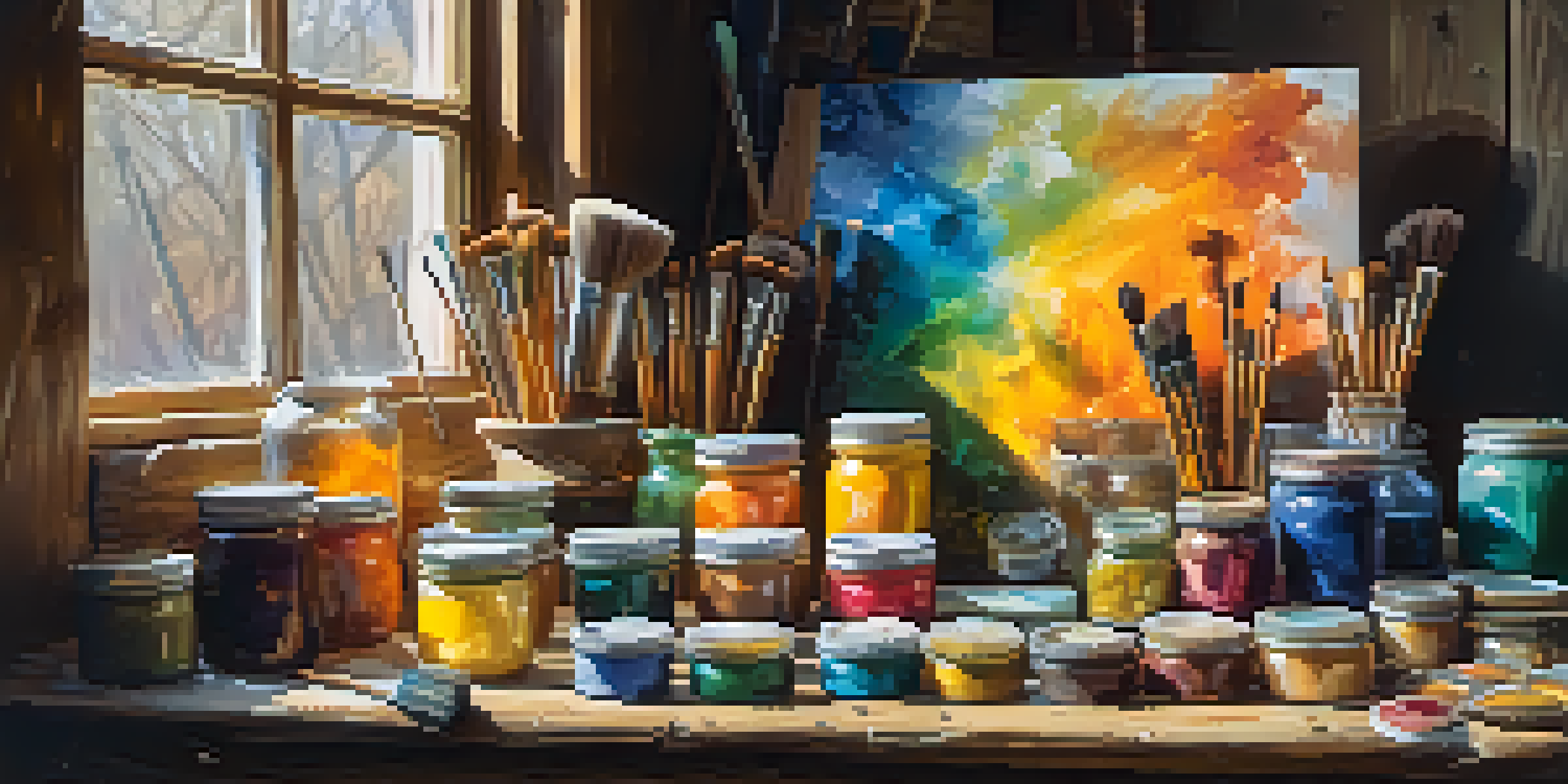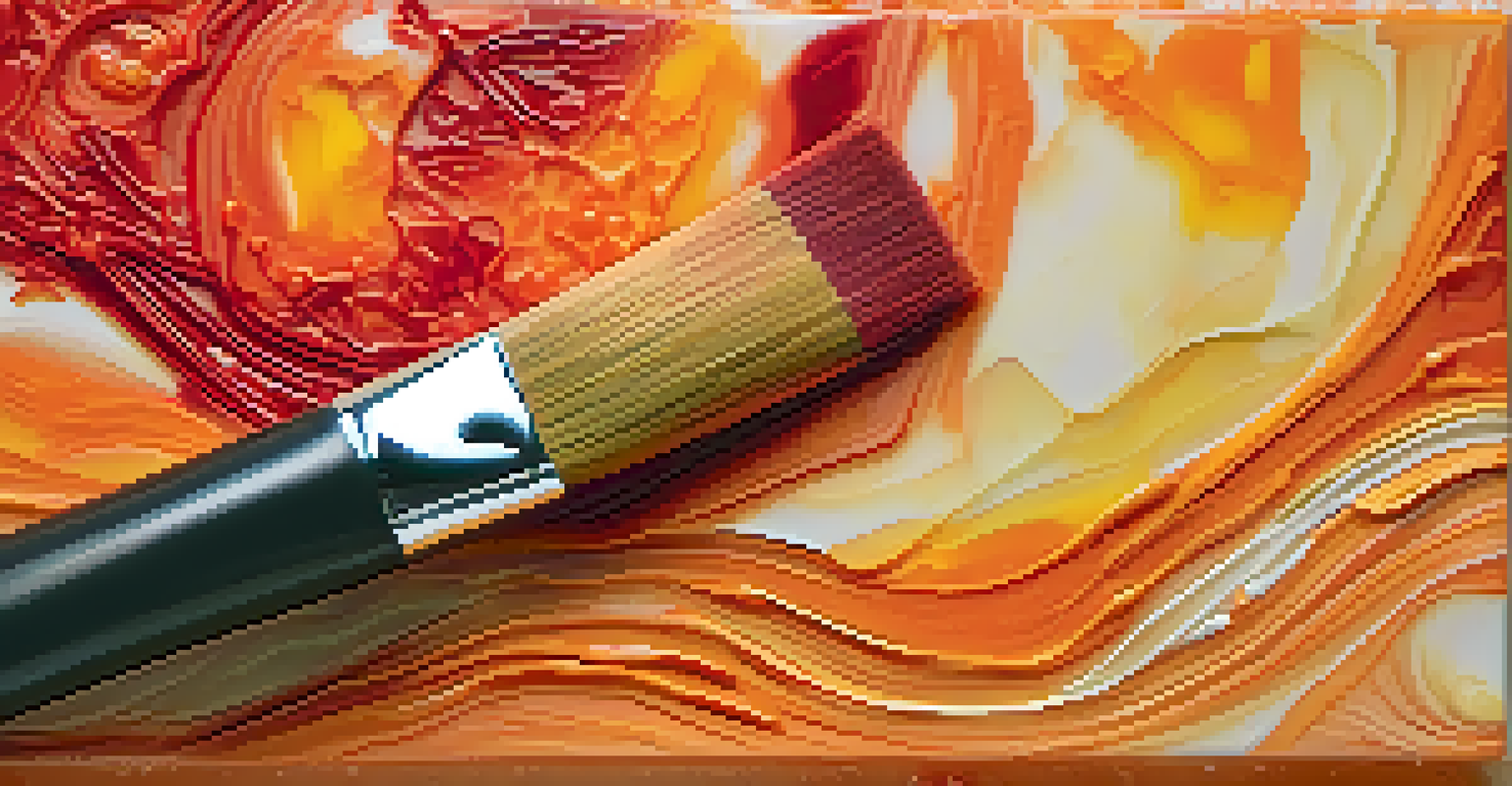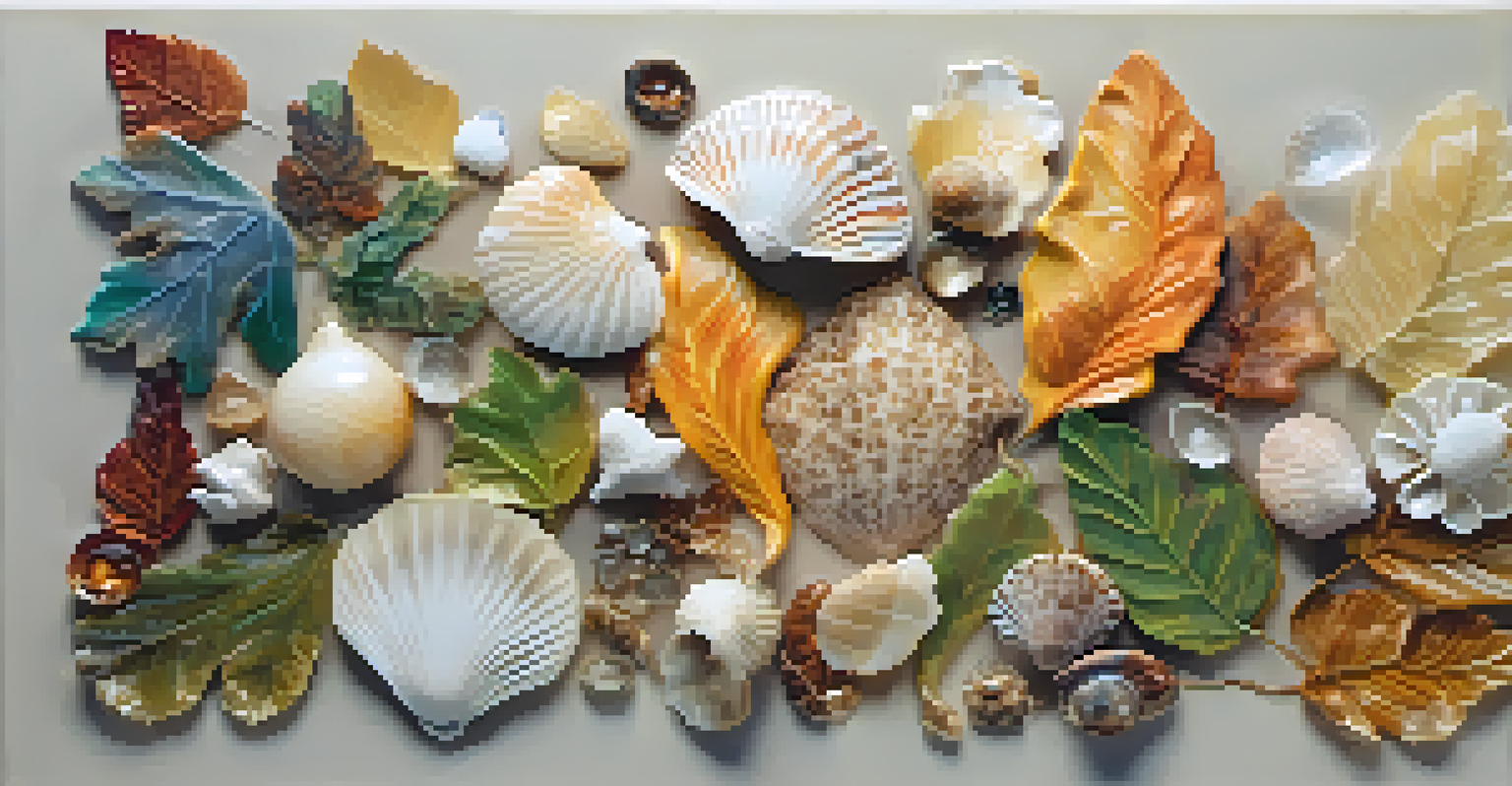Encaustic Painting: Beeswax Techniques Through the Ages

The Origins of Encaustic Painting: A Historical Overview
Encaustic painting, which involves mixing pigments with hot beeswax, dates back to ancient civilizations. The technique was famously used by the Egyptians to create stunning portraits on wooden panels. These early artists harnessed the unique properties of beeswax, allowing them to create vivid colors that have withstood the test of time.
Art enables us to find ourselves and lose ourselves at the same time.
As we delve deeper into history, we find that the Greeks also embraced encaustic painting, particularly in their sculptures. The versatility of beeswax enabled them to add intricate details and vibrant hues to their artworks, establishing a legacy that artists still admire today. This method also found its way into early Christian art, where it played a pivotal role in iconography.
Despite its decline during the Renaissance, encaustic painting saw a revival in the 20th century. Artists began to rediscover the beauty and texture that beeswax could bring to their creations, leading to a resurgence of interest in this ancient medium.
Understanding the Encaustic Process: Key Techniques
The encaustic process begins with melting beeswax and mixing it with colored pigments. This mixture is then applied to a surface, typically wood, using brushes or other tools. The heat from the wax allows for a unique layering technique, where artists can build up textures and depths in their artwork.

One of the standout features of encaustic painting is its ability to create a luminous effect. As light interacts with the layers of wax, it can produce a glow that enhances the colors used. This characteristic not only captivates the viewer but also adds a tactile quality to the artwork.
Encaustic Painting's Rich History
Encaustic painting, dating back to ancient civilizations, has evolved through various cultures, influencing modern artistic expressions.
Additionally, artists often incorporate other materials, such as oil paints or even found objects, into their encaustic pieces. This blend of mediums allows for endless creativity and experimentation, making encaustic painting a dynamic and exciting form of expression.
The Tools of the Trade: Essential Equipment for Artists
To get started with encaustic painting, artists need a few essential tools. First and foremost is a heat source, such as a hot plate or a heat gun, to melt the beeswax. Brushes specifically designed for encaustic work are also crucial, as they can handle the unique texture of wax without losing their shape.
Every artist was first an amateur.
Artists may also choose to use a palette to mix their pigments and wax, allowing for better control over color blending. Other tools, like spatulas or palette knives, can help with layering and creating texture in the work. Each tool plays a role in helping artists achieve their desired effects.
Lastly, having a well-ventilated workspace is vital, as the fumes from melted beeswax can be potent. Proper safety measures ensure that artists can focus on their creativity without compromise, fostering an environment conducive to artistic exploration.
Exploring Color Theory in Encaustic Painting
Color theory is an essential aspect of encaustic painting, as the interaction between colors can produce striking visual effects. Understanding how colors blend and contrast within the wax medium allows artists to create vibrant compositions. The warm, translucent nature of beeswax adds a unique twist to traditional color mixing.
For instance, layering different colors of wax can create a sense of depth that is difficult to achieve with other mediums. When applied thinly, colors can appear to glow from within, enhancing the emotional impact of the artwork. This quality makes encaustic painting a favorite among artists who seek to convey complex feelings through color.
Essential Techniques and Tools
Mastering the encaustic process requires specific techniques and tools, enabling artists to create unique textures and luminous effects.
Artists often experiment with complementary colors to create dynamic contrasts, drawing the viewer's eye and adding visual interest. By mastering color theory in the context of encaustic painting, artists can elevate their works to new levels of sophistication.
Famous Artists Who Revolutionized Encaustic Painting
Throughout history, several artists have made significant contributions to the world of encaustic painting. One notable figure is Jasper Johns, who famously incorporated encaustic techniques into his iconic flag paintings. His innovative approach not only revived interest in the medium but also challenged traditional notions of art.
Another influential artist is Brice Marden, who experimented with layering wax to create rich textures and complex compositions. Marden's work demonstrates how encaustic painting can transcend conventional boundaries, allowing for a more tactile experience. His dedication to this medium has inspired countless artists to explore its potential.
These artists, among others, have played a pivotal role in shaping the modern understanding of encaustic painting. Their legacy is a testament to the enduring appeal and versatility of beeswax as an artistic medium.
Contemporary Trends in Encaustic Art
Today, encaustic painting is experiencing a renaissance, with contemporary artists pushing the boundaries of this ancient technique. Many are experimenting with mixed media, combining encaustic with photography, collage, and even digital elements. This fusion allows for innovative expressions and broadened artistic horizons.
Social media platforms have also contributed to the resurgence of encaustic art, providing artists with a global stage to share their work. Online communities and tutorials have made it easier for newcomers to learn the craft, fostering a vibrant community of artists passionate about this unique medium.
Contemporary Encaustic Trends
Today, encaustic painting is flourishing, with artists exploring mixed media and innovative approaches, supported by a vibrant online community.
As more artists embrace encaustic painting, we're witnessing a rich diversity of styles and approaches. This evolution not only honors the historical roots of the technique but also paves the way for exciting new possibilities in the world of art.
Getting Started: Tips for Aspiring Encaustic Artists
If you're intrigued by encaustic painting and want to give it a try, starting with the right mindset is essential. Embrace the experimental nature of the medium; mistakes can lead to unexpected discoveries! Begin with small projects to build your confidence and familiarize yourself with the tools and techniques.
When selecting materials, opt for high-quality beeswax and pigments to ensure vibrant results. It's also a good idea to research various methods through online tutorials or local workshops. These resources can provide valuable insights into the process and help you refine your skills.

Finally, don't hesitate to connect with other encaustic artists. Sharing experiences and techniques can enhance your understanding and inspire your creative journey. The encaustic community is welcoming and eager to support newcomers, making it an exciting time to explore this art form.